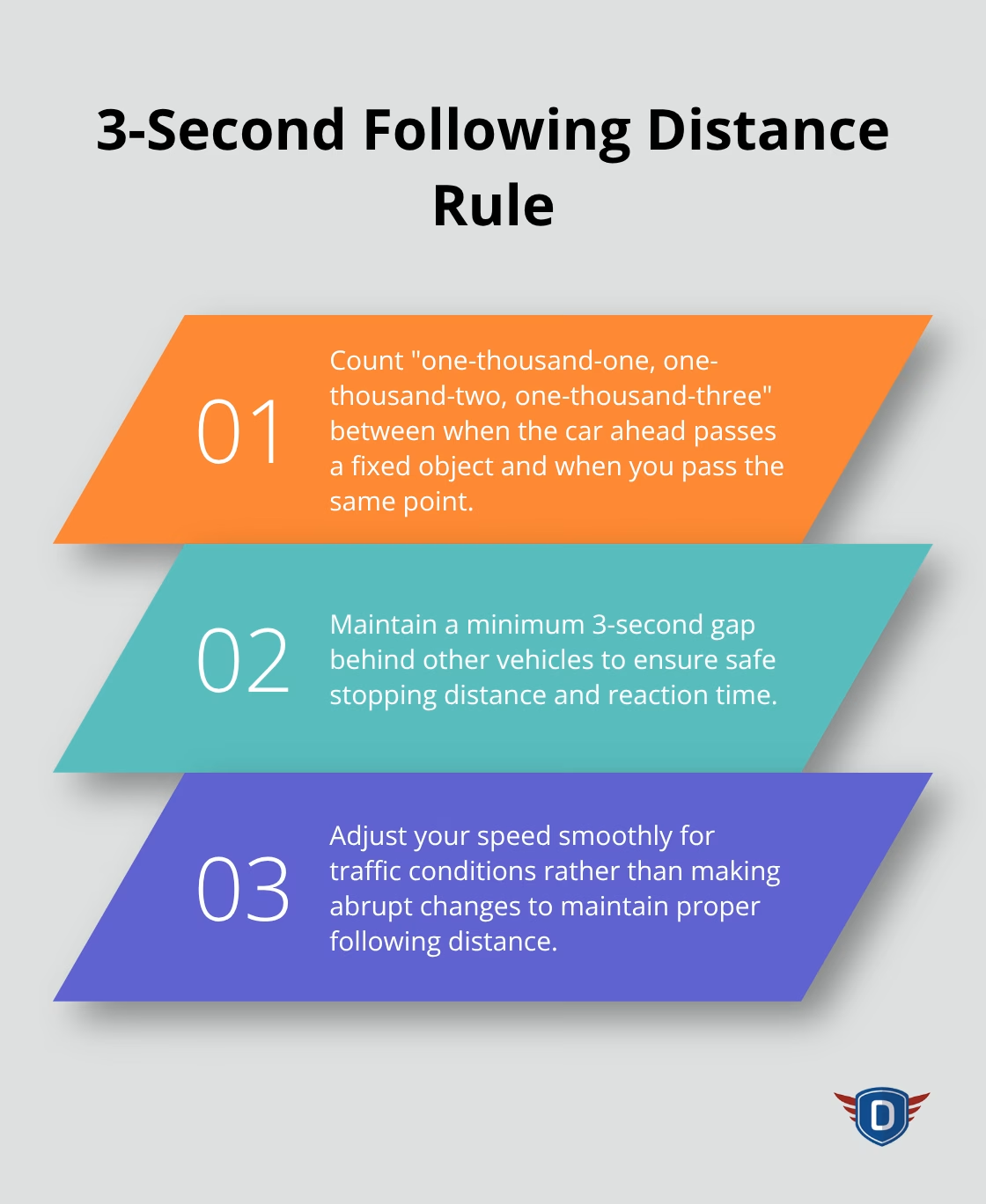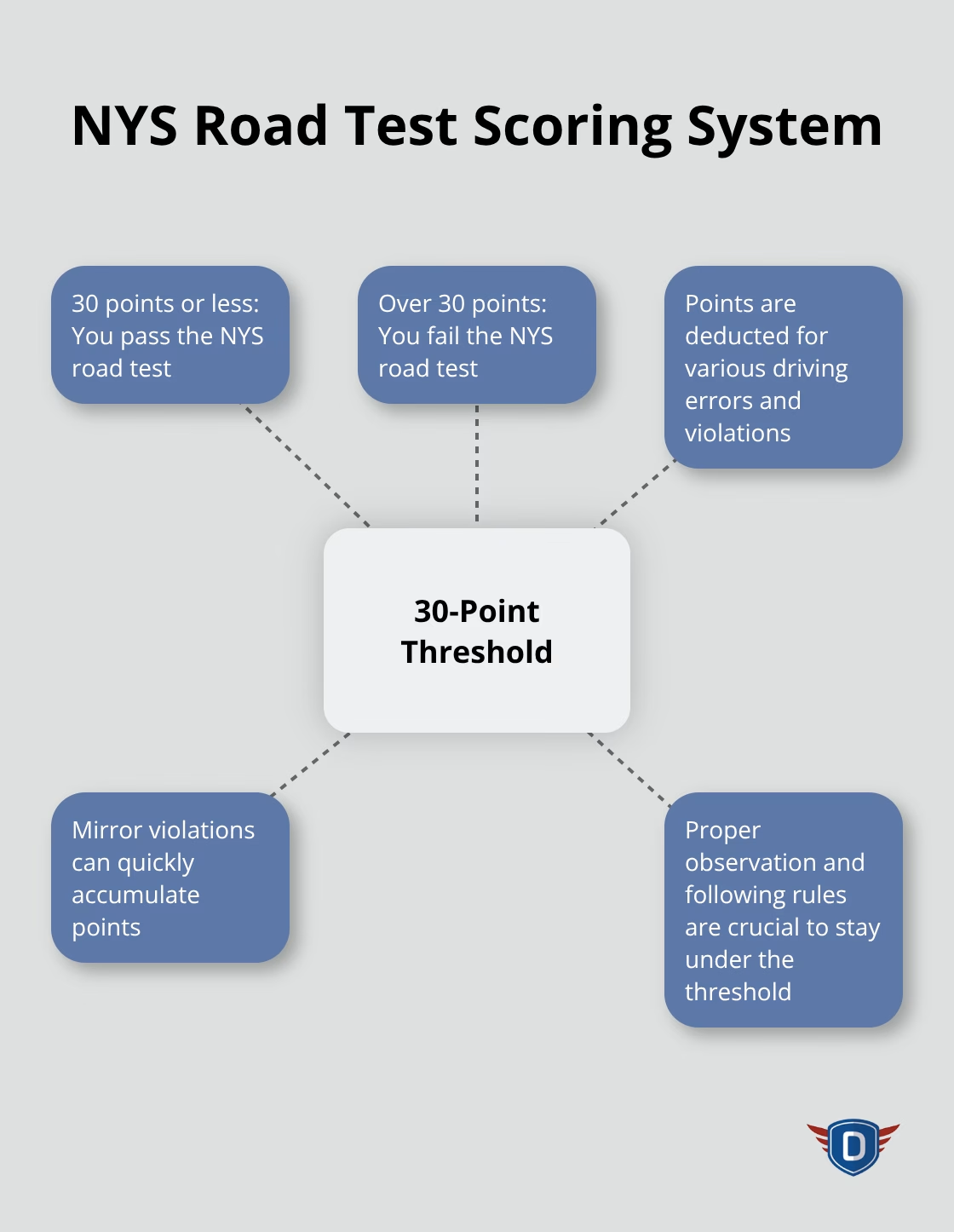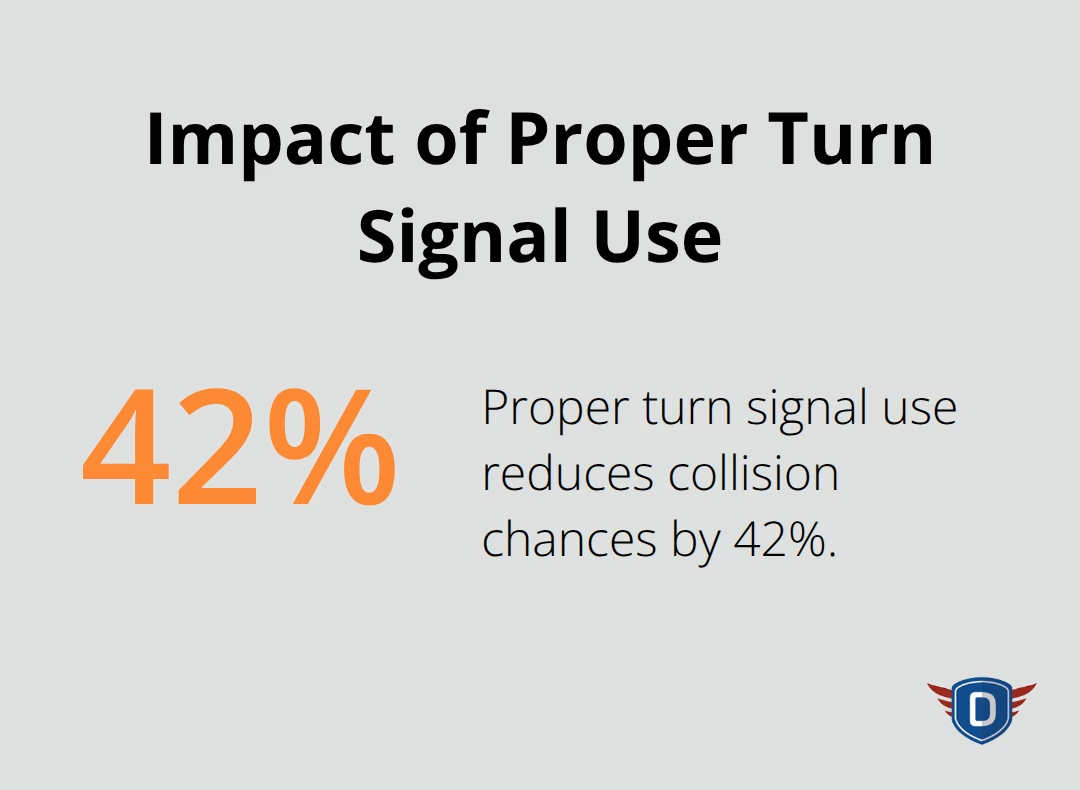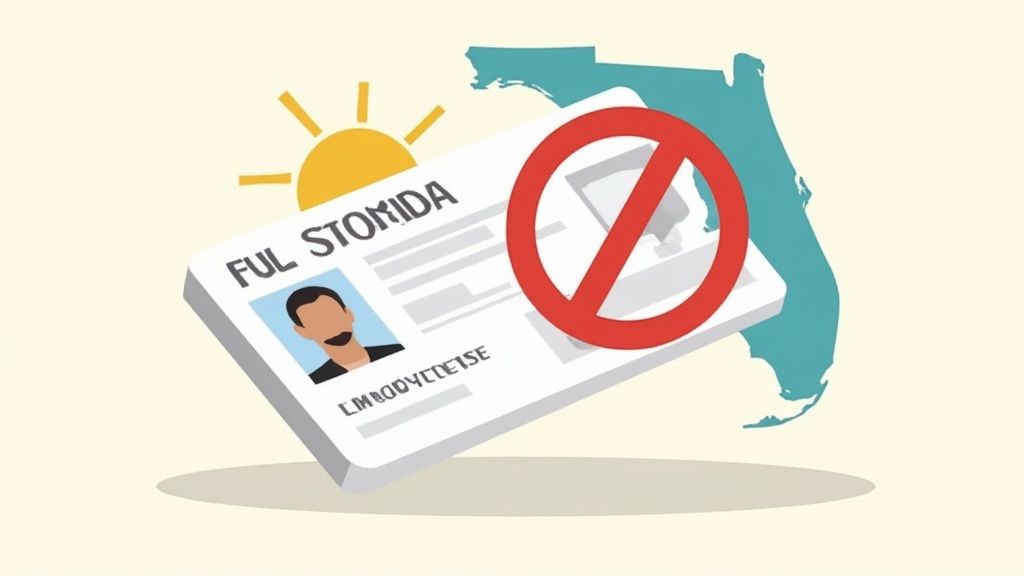Passing your road test requires mastering specific skills that examiners evaluate systematically. Most states use a point-based system where accumulating too many penalty points results in failure.
Understanding how many points to pass road test requirements vary by location, but the fundamentals remain consistent across all testing centers. We at DriverEducators.com break down the essential techniques and common pitfalls that determine your success on test day.
Essential Skills for Road Test Success
Vehicle Control and Handling Techniques
Examiners watch your steering technique obsessively during road tests. Keep your hands at the 9 and 3 o’clock positions throughout the entire exam. Proper hand positioning helps maintain vehicle control and reduces reaction time during emergency situations.
Maintain your vehicle within the center of your lane at all times. Even minor lane drift costs you points in most states. Practice smooth steering inputs without overcompensation or jerky movements. Your vehicle should track straight without constant corrections.
Proper Following Distance and Speed Management
Speed management separates successful candidates from those who fail. Drive within 5 mph of posted speed limits consistently. Improper speed control remains a significant factor in road test performance and overall driving safety.
Maintain a 3-second following distance minimum behind other vehicles. Count one-thousand-one, one-thousand-two, one-thousand-three between when the car ahead passes a fixed object and when you pass the same point. Adjust your speed smoothly for traffic conditions rather than making abrupt changes. Examiners deduct points for tailgating and excessive speed violations.

Smooth Acceleration and Braking Methods
Apply brakes progressively rather than jabbing them. Start your braking process 100-150 feet before stop signs and traffic lights in normal conditions. Smooth acceleration from stops impresses examiners more than quick starts (which often signal nervousness or poor control).
Poor clutch control in manual transmissions results in automatic point deductions. Practice acceleration to traffic speed within reasonable distances without causing your engine to struggle or race unnecessarily. These fundamental skills form the foundation that examiners use to evaluate your readiness, but technical proficiency alone won’t guarantee success if you make critical errors during the test.
Common Road Test Mistakes to Avoid
Mirror and Blind Spot Oversights Cost Points Fast
Examiners track your mirror usage throughout the entire test and deduct 10 points for failure to observe properly before you leave the curb. Check your rearview and side mirrors before any departure, then perform shoulder checks during every lane change. You receive a 5-point penalty when you use only mirrors without shoulder glances-points that add up quickly when combined with other violations.
The NYS road test scoring sheet shows that you fail when you accumulate over 30 points, while 30 points or less means you pass. Mirror violations stack rapidly because examiners expect constant scan behavior. Develop a rhythm where you check your mirrors every 3-5 seconds during normal operation and immediately before any maneuver.

Lane Changes and Stop Sign Violations
Improper lane changes trigger multiple point deductions simultaneously. You lose 5 points when you fail to signal, while inadequate observation adds another 10 points. Poor timing or unsafe gaps can result in additional penalties for inattentive operation. Always signal early, check mirrors, perform shoulder checks, then execute smooth lane changes with adequate space.
You face the fastest path to test failure when you roll through stop signs. Complete stops require your vehicle to reach zero movement for at least 2-3 seconds. Count slowly in your head while stopped to avoid the roll stop trap that catches many candidates who fail. Traffic violations like incomplete stops often carry significant penalties that put you dangerously close to the failure threshold before you complete half your test route.
Speed Control and Following Distance Errors
You receive significant point deductions when you drive too slowly or exceed speed limits by more than 5 mph. Examiners expect you to match traffic flow while staying within legal limits. Excessive speed violations can result in substantial penalties.
Poor following distance management costs you points when you tailgate other vehicles. Maintain at least a 2-second gap behind the vehicle ahead-this gap should increase to 3-4 seconds in poor weather conditions. These technical mistakes often compound with communication errors that examiners watch for throughout your entire evaluation.
What Examiners Look for During Your Test
Defensive Driving Awareness and Decision Making
Examiners evaluate your scanning patterns constantly to assess your situational awareness. You should move your eyes every 2-3 seconds between mirrors, gauges, and the road ahead. Poor observation behavior results in 10-point penalties for inattentive operation. Your head movement must be visible to demonstrate active observation rather than staring straight ahead.
Test anxiety causes many candidates to freeze or make poor decisions when they face unexpected situations. Examiners create pressure deliberately through complex intersections, pedestrian crossings, and heavy traffic scenarios. Your ability to maintain smooth operations while you process multiple inputs determines whether you pass or fail. Practice in challenging conditions before your test rather than avoid them.
Proper Use of Turn Signals and Communication
Examiners score your signal behavior ruthlessly throughout the entire test. You must activate turn signals at least 100 feet before turns in urban areas and 300 feet before turns on highways. Each signal failure costs you 5 points, and these penalties accumulate rapidly when you forget signals during multiple maneuvers. Studies show that proper turn signal use reduces collision chances by 42 percent (which explains why examiners weight this behavior so heavily).
Signal timing matters more than most drivers realize. Early signals demonstrate planning and consideration for other drivers, while late signals suggest poor awareness or decision-making. Always signal before you check mirrors and blind spots, not after. This sequence shows examiners that you communicate your intentions before you execute maneuvers. Cancel your signals immediately after you complete turns to avoid confusion.

Confidence and Composure Under Pressure
Examiners watch how you handle stress and unexpected situations throughout your test. They observe your grip on the steering wheel, your posture, and your reaction time when conditions change suddenly. Nervous candidates often make hasty decisions or second-guess themselves, which leads to point deductions for poor vehicle control or traffic violations.
You demonstrate confidence through smooth, deliberate actions rather than hesitation or overcorrection. When you encounter pedestrians at crosswalks, yield completely and wait patiently rather than inch forward impatiently. At four-way stops, follow right-of-way rules precisely even when other drivers make mistakes. Examiners want you to succeed and note candidates who maintain composure while other drivers behave unpredictably around them.
Final Thoughts
Your road test success depends on consistent practice and understanding how many points to pass road test requirements in your state. Most states fail candidates who accumulate over 30 points, which makes every maneuver count toward your final score. Focus your preparation on the highest-penalty mistakes that cause immediate failures.
Practice complete stops at stop signs, maintain proper following distances, and develop automatic mirror-check habits. These fundamentals prevent the costly errors that eliminate most candidates before they complete their routes. Test day preparation extends beyond technical skills-get adequate sleep, eat a nutritious meal, and arrive early to reduce anxiety.
After you pass your road test, your education continues. New drivers face higher accident rates during their first year of independent operation (which makes continued practice essential for safety). We at DriverEducators.com offer driver education programs that help students master essential skills and develop lifelong safe habits. Your license represents the start of responsible operation rather than the end of your education.





